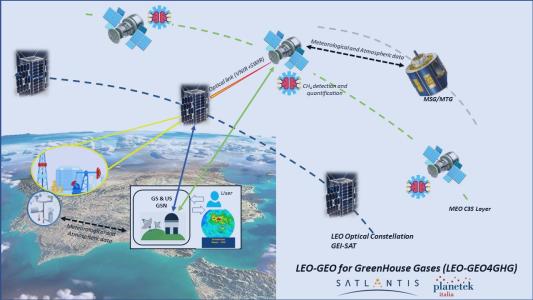LEO-GEO for Greenhouse Gases LEO-GEO4GHG

The LEO-GEO4GHG project studied the feasibility of new frontiers of cloud computing in space and artificial intelligence (AI) combining multiple sources of data such as the SATLANTIS GEI-SAT constellation and other external meteorological and atmospheric data with the final aim of providing near real-time methane detection and quantification.
Reducing methane emissions from the fossil fuel industry represents a key opportunity for mitigating the impact of methane on climate change. Within the framework of methane detection from space, space-based Earth observation (EO) is rapidly evolving and adapting to the needs of end users who demand increasingly more efficient and effective space-based EO systems, however, end users are still experiencing the inefficiencies related to traditional mission operations.
The analysis and studies carried out within the framework of the LEO-GEO4GHG project show how a cognitive cloud computing in space (C3S) infrastructure could allow maximum performance of methane detection and quantification to finally ensure compliance with end user requirements. This C3S constellation is envisioned to provide support to other EO constellations in LEO by providing a set of platforms with superior computation, storage and telecommunications capabilities. A C3S platform could also provide exceptional capabilities for the parallel processing of other data sources to feed the detection algorithms with additional information that will ultimately result in an increase of sensitivity and accuracy of the full image processing workflow.
Therefore, the availability of a cognitive cloud computing interface in space could provide exceptional capabilities for the image processing related to the methane detection and quantification allowing future systems to break down the limitations that currently systems experience.
